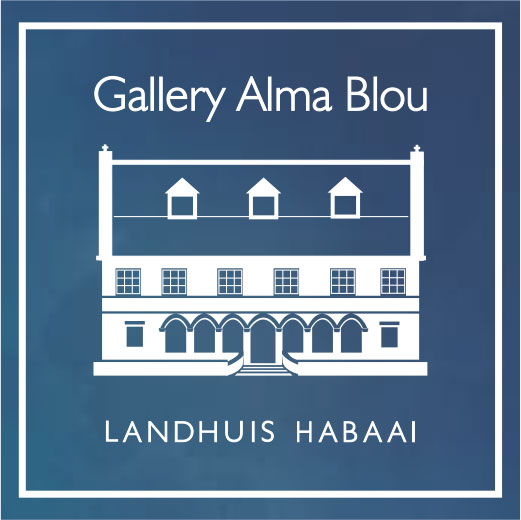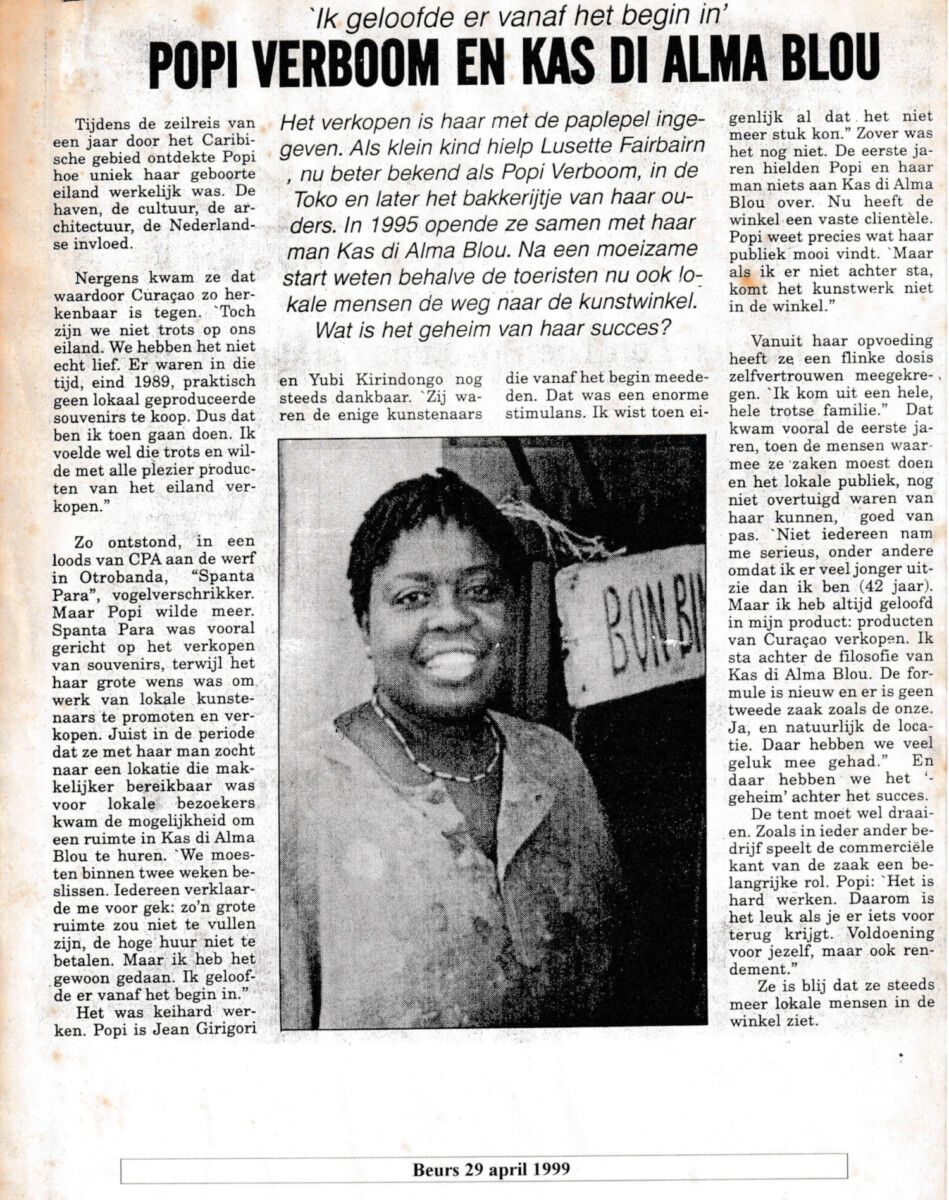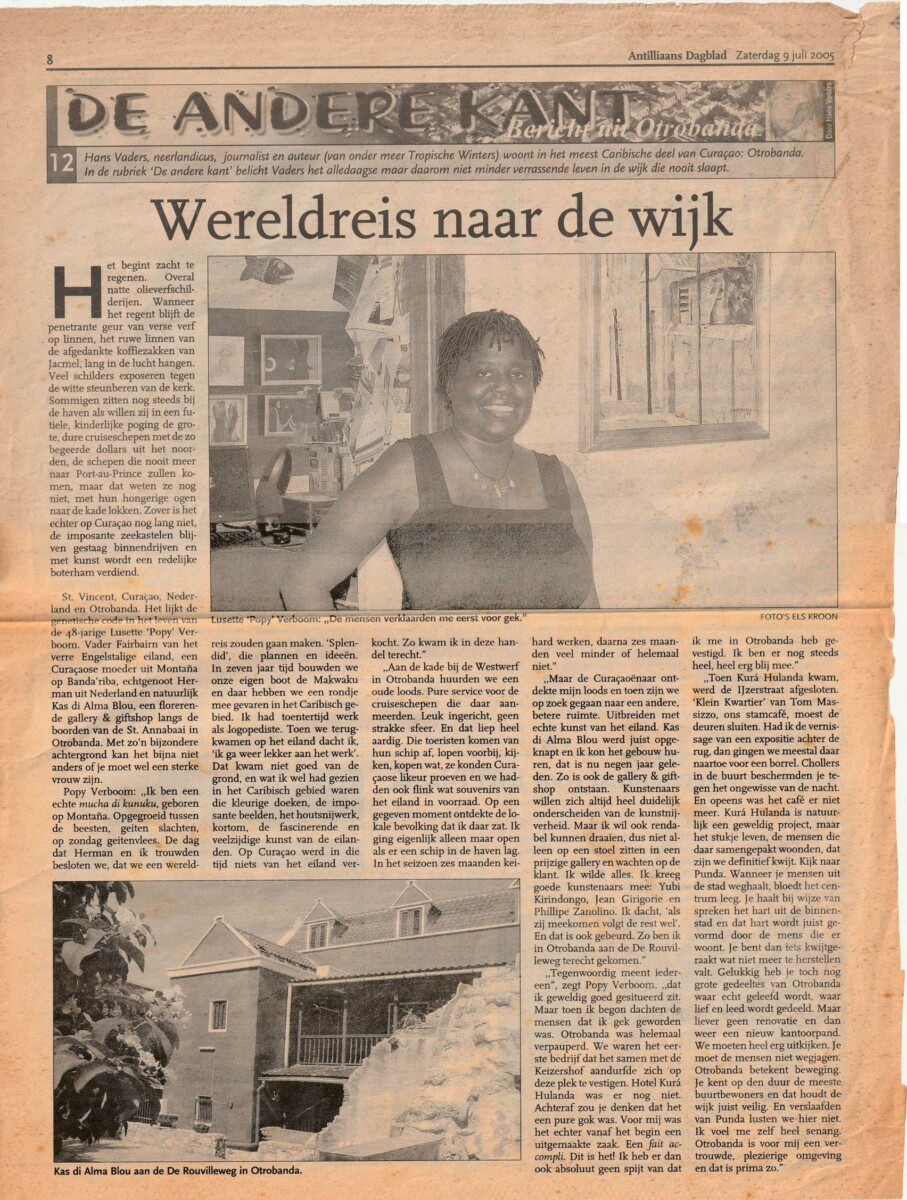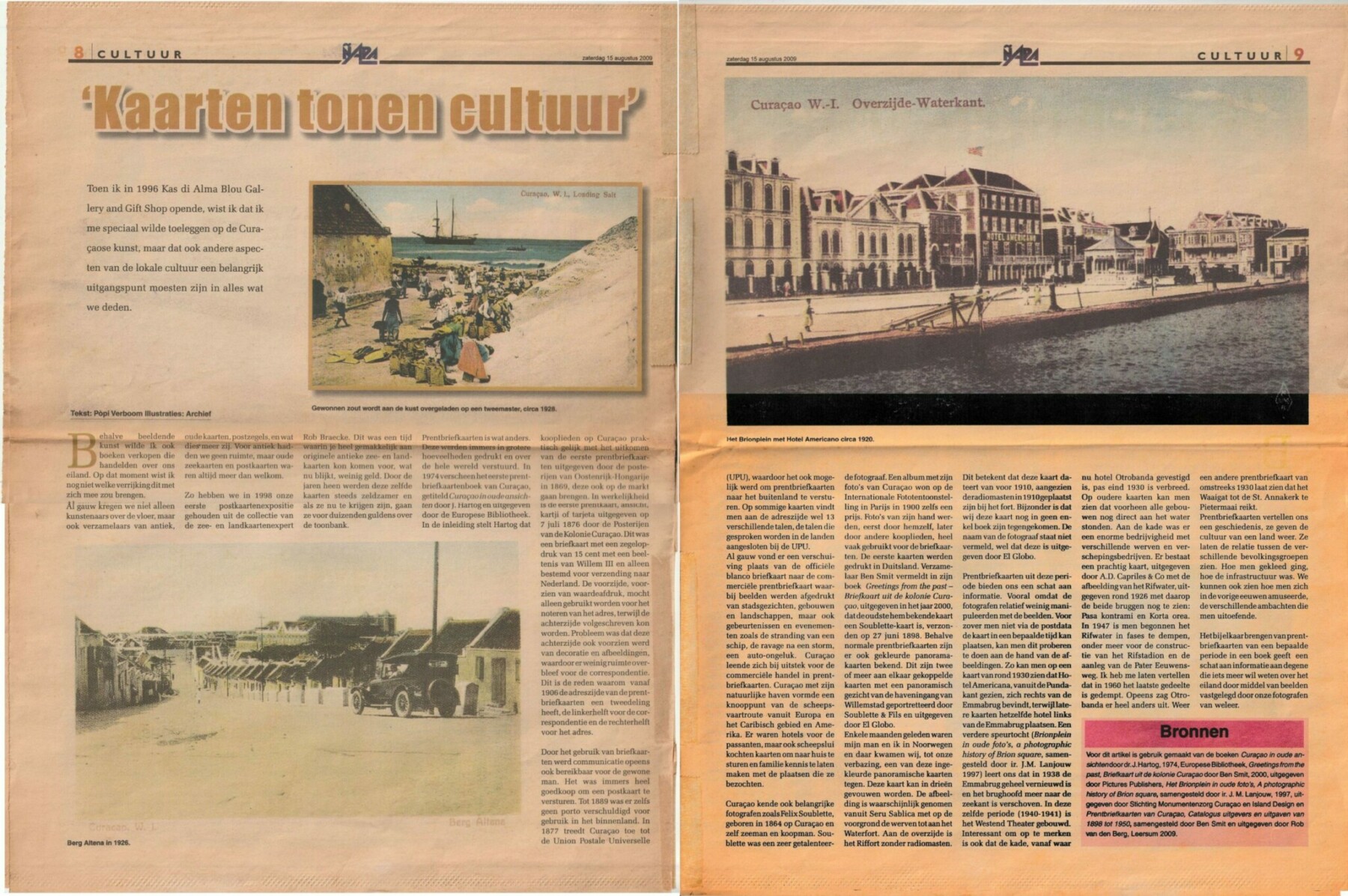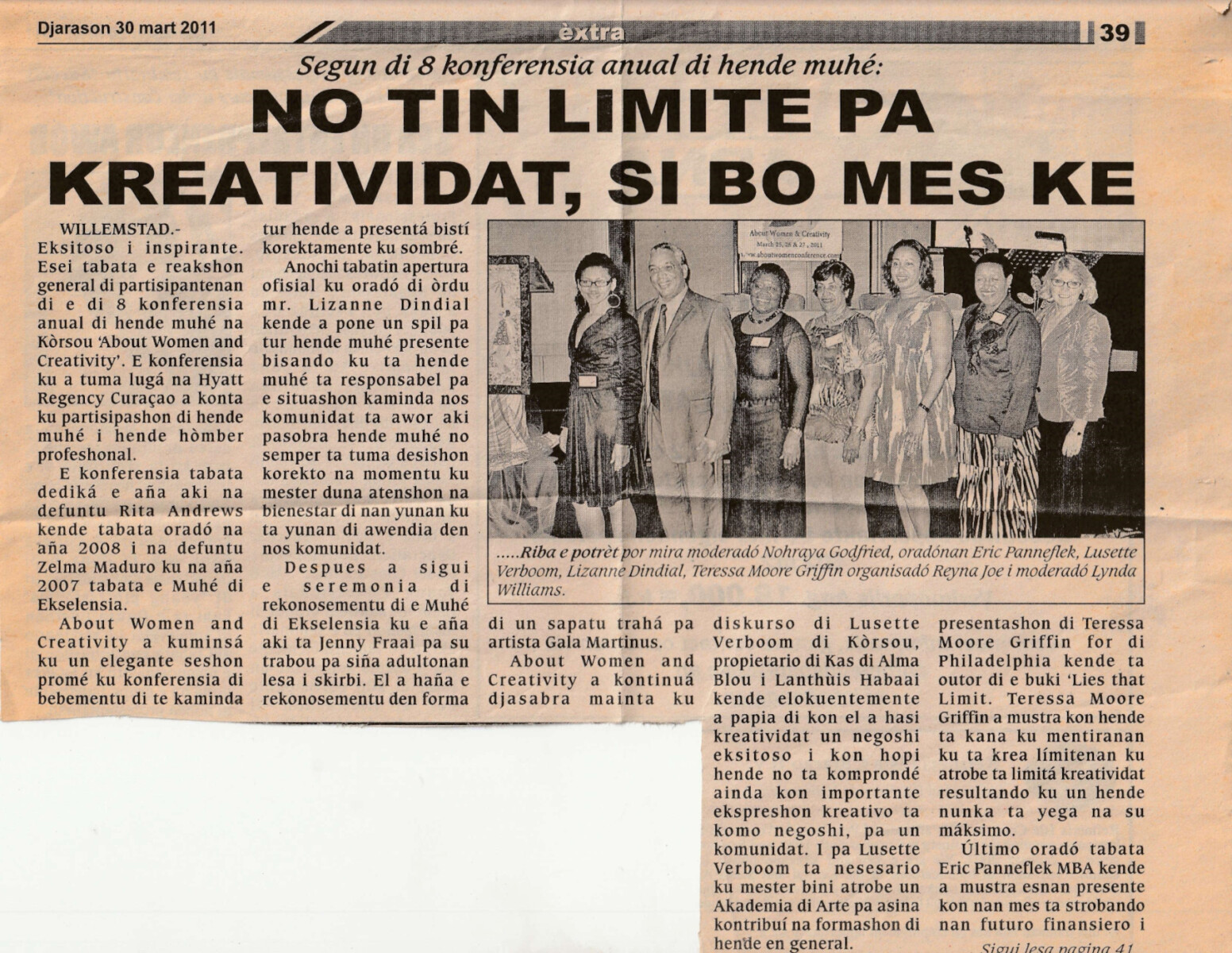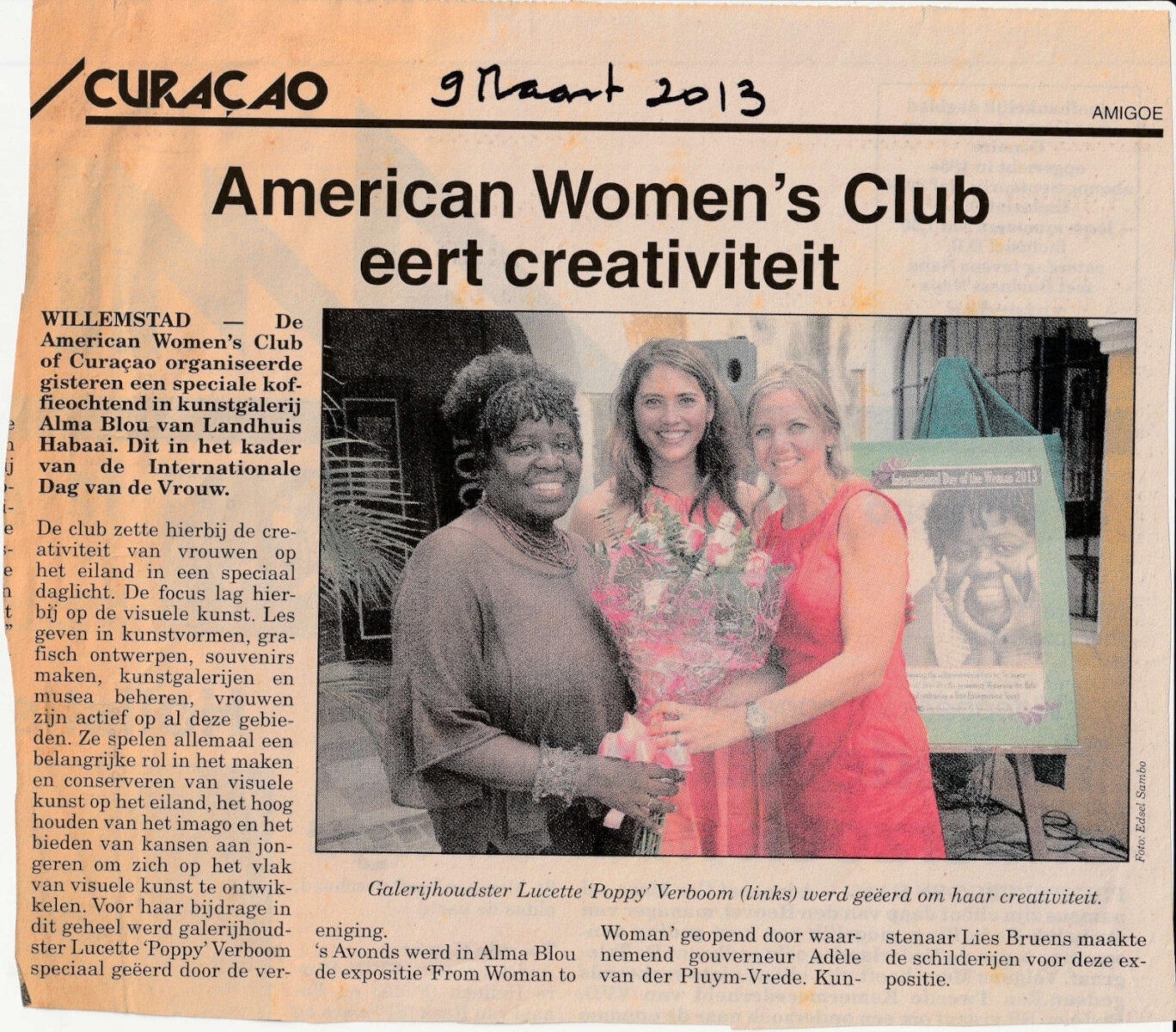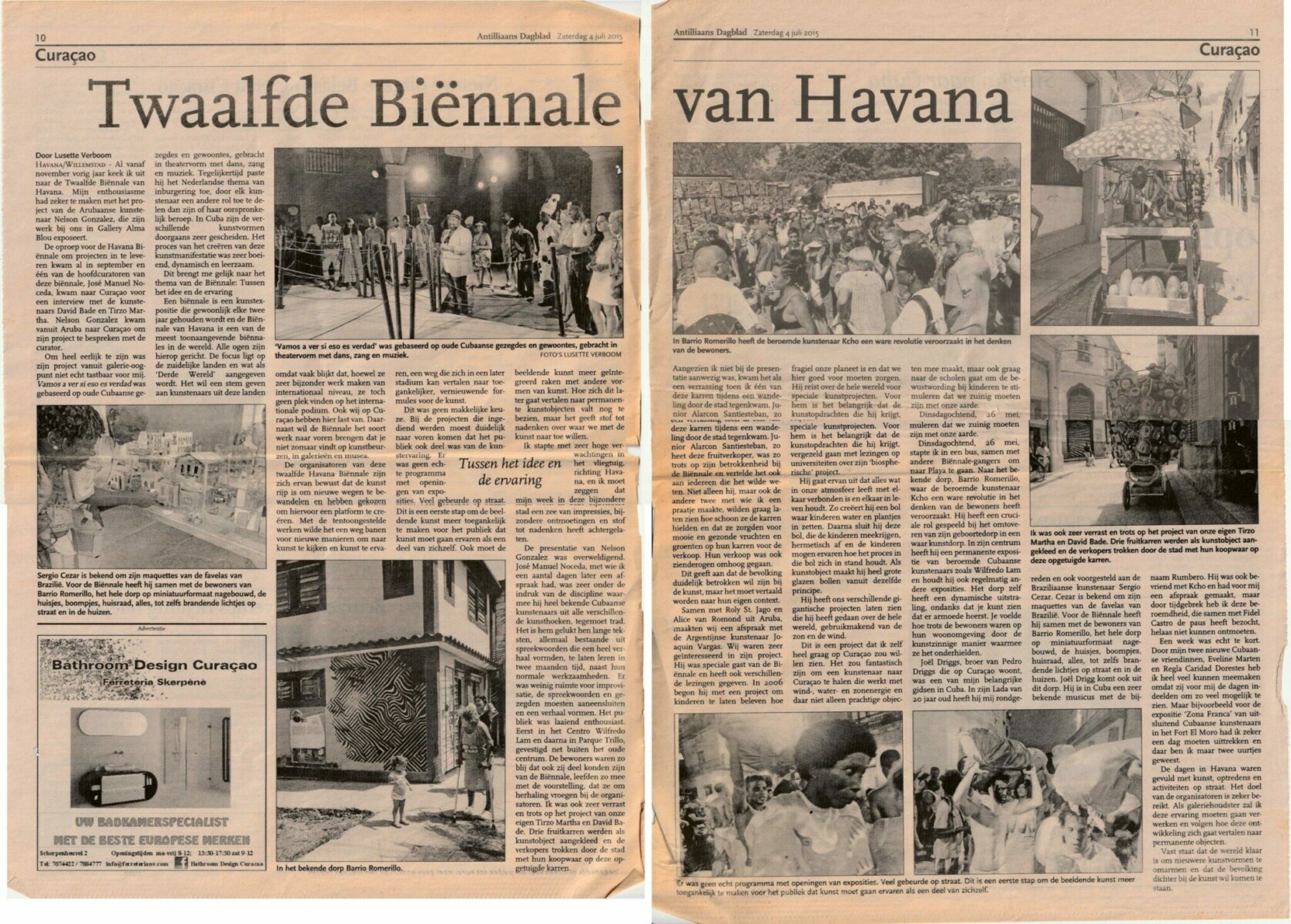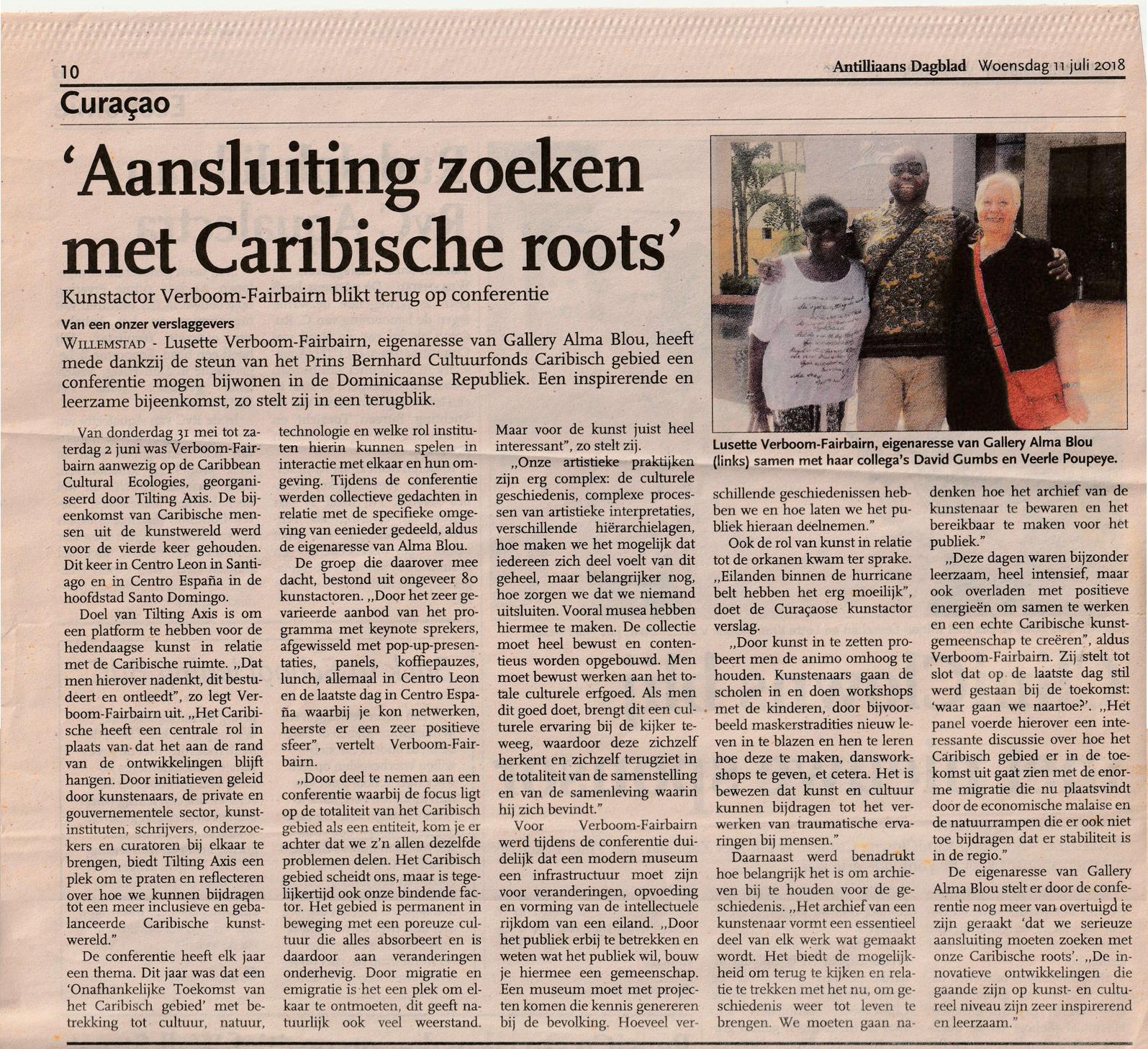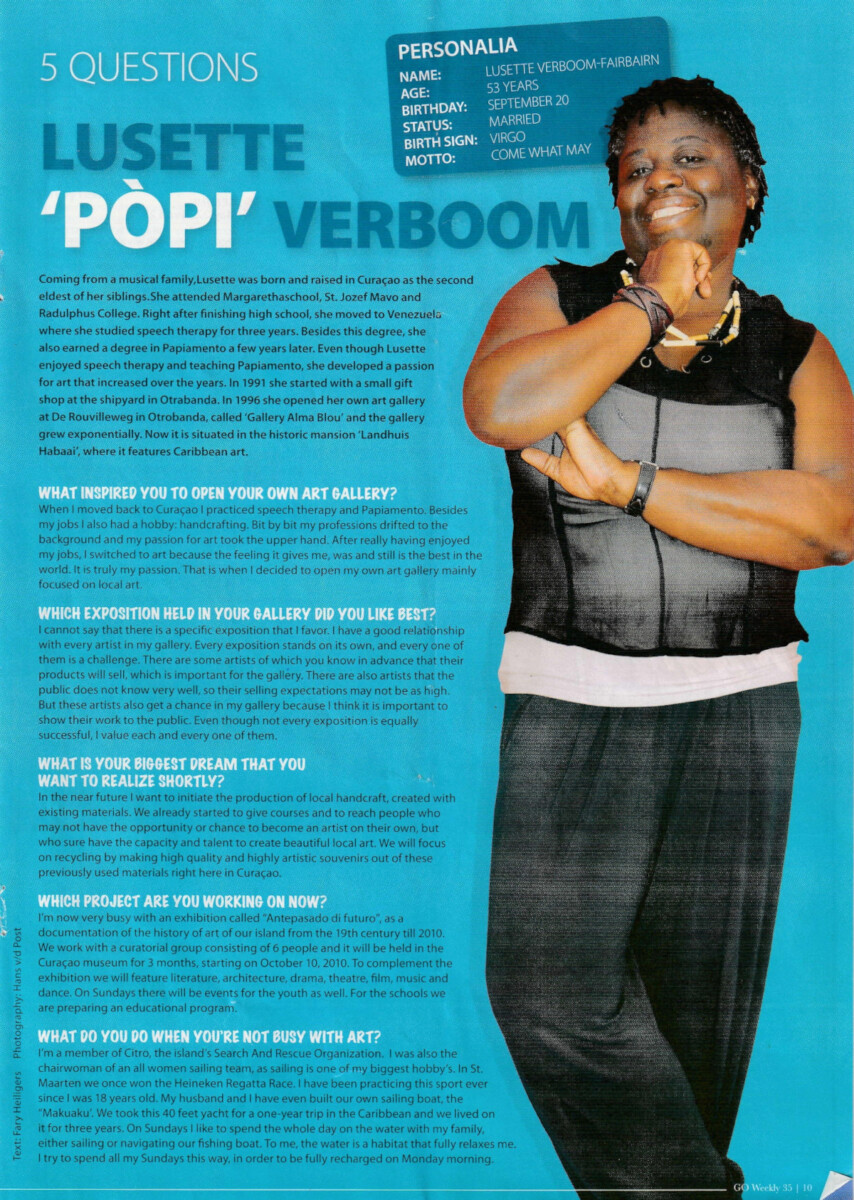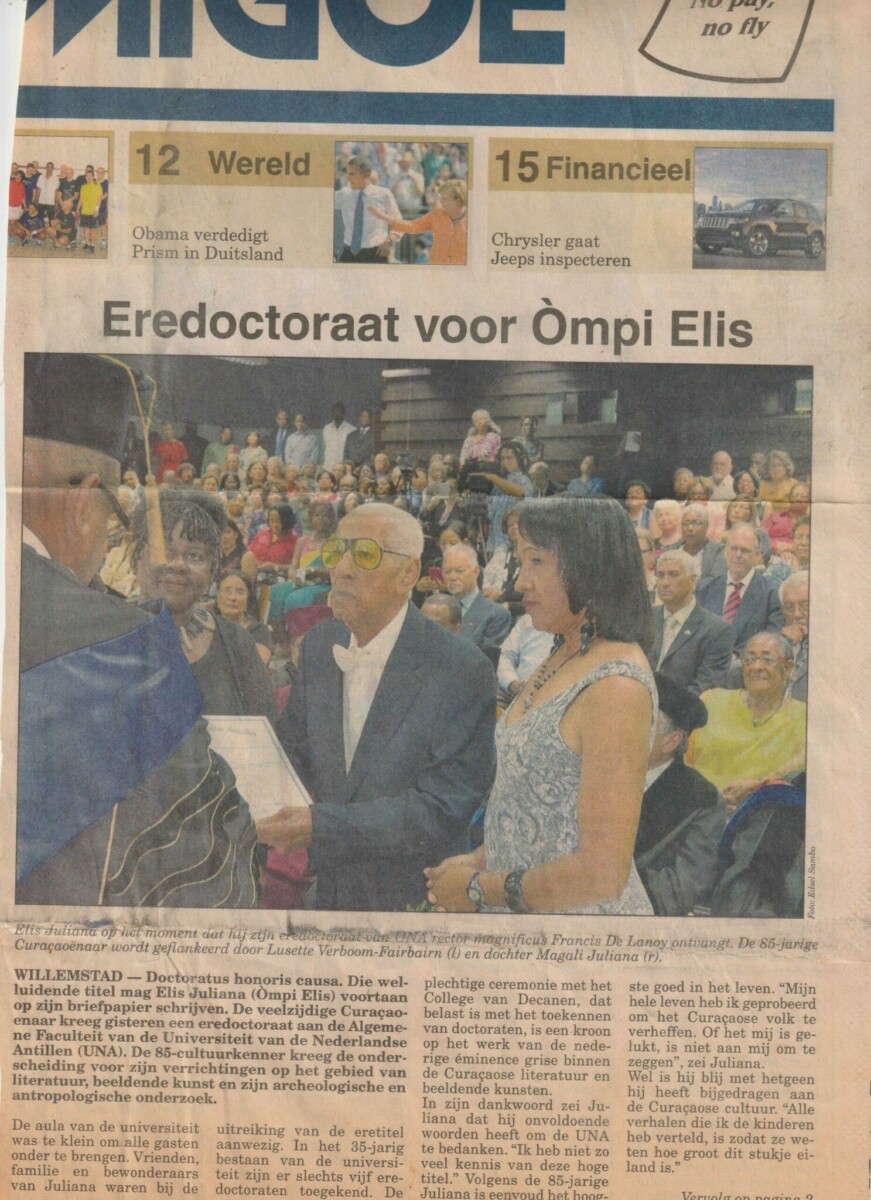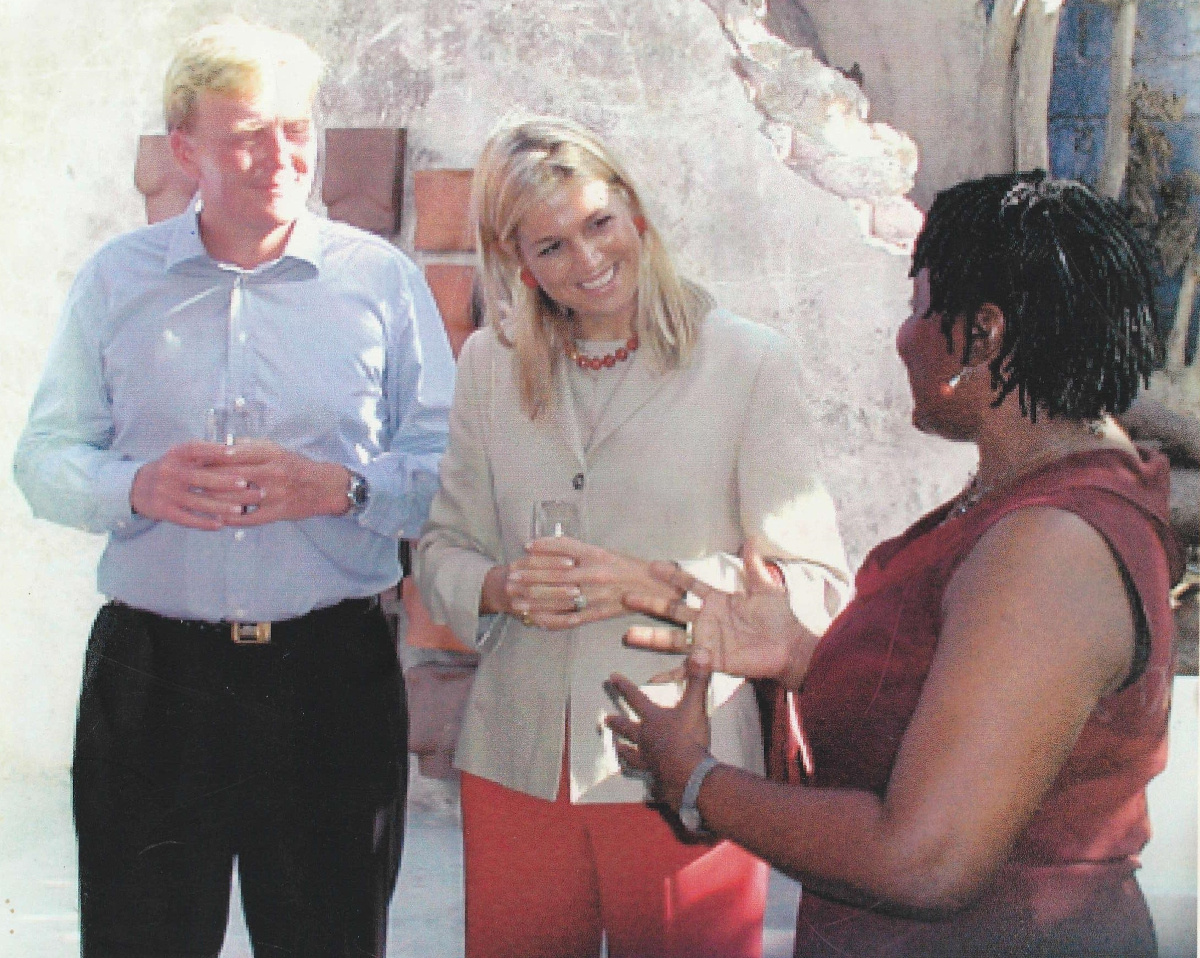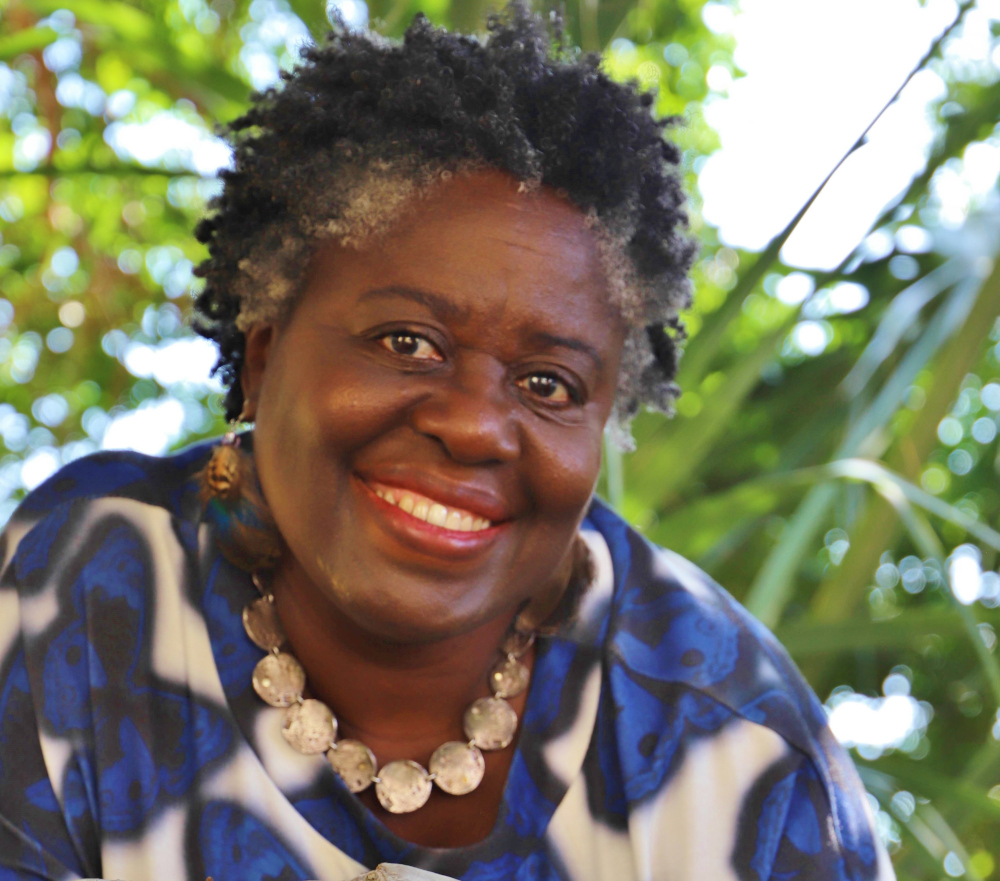
About Lusette Verboom, Curator
St. Vincent, Curaçao, the Netherlands and Otrobanda. It seems to be the genetic code in Lusette Verboom’s life. Father Fairbairn from the Caribbean English-speaking island, a Curaçao mother from Montaña, husband Herman from the Netherlands and of course Gallery Alma Blou.
Lusette is a real mucha di kunuku, born in Montaña, growing up between the abundant offerings of the earth. Selling is also in her blood. As a small child she helped in the toko and later also the bakery of her parents.
In 1975 she left for Venezuela for a study assignment and three years later she returned to Curaçao, graduated as a speech therapist and started working at the Deaf School. In 1980 she met her future husband Herman Verboom through her work and six months later they got married. She also obtained her Papiamentu degree and worked for four years at the Sede di Papiamentu before resigning in 1989 for a sabbatical. She spends this year with Herman sailing the Caribbean on their own boat “Makuaku”. The trip was an eye-opener for her in terms of the wealth of locally handcrafted arts and crafts products for sale on the islands.
Back in Curaçao, Lusette decided not to continue in her old profession, but to do something to stimulate and market the production of arts and crafts in Curaçao. This is how she started a souvenir shop called Spanta Para (scarecrow) on the Westwerf, especially oriented to cruise tourists. The disadvantage was that they were indeed only available to cruise tourists. It soon became clear that the local population was also very interested in what they had to offer. Herman, an art teacher, also made Lusette increasingly familiar with the local visual artists. That was the incentive to look for another location.
The new building had to offer the opportunity to exhibit local art as well. That became Kas di Alma Blou on Rouvilleweg in Otrobanda. The name of the building, conceived by the owners, was deliberately chosen as the name of the Gallery & Giftshop. The concept of combining arts and crafts in one location was new to Curaçao. In addition, the building was in the middle of an area populated with drug addicts. Artists were at first hesitant to embrace this new form of art sale, but thanks to the support of some important artists such as Yubi Kirindongo, Jean Girigori and Philippe Zanolino, more and more artists agreed to having their work displayed at Kas di Alma Blou.
After ten years of renting in Otrobanda, Lusette and Herman bought the dilapidated Landhuis Habaai and Gallery Alma Blou opened its doors in 2006 after an intensive restoration.
In an interview about fifteen years of Gallery Alma Blou, Lusette says in 2011: “Art is of great importance to a culture. It is a visual representation of what will become history. In the timeline of art you can also learn a lot about what is going on and what happened in society.”
For a small island like Curaçao, relatively visual art is made on a very large scale. The number of artists is considerable. Gallery Alma Blou alone sells work by more than 30 local artists. Lusette has a bond with every artist; she knows all of them personally, goes on a studio visits, discusses new work with them and guides them where necessary through an exhibition. Conversely, artists also spontaneously come to Lusette and Herman’s for coffee.
Throughout the years, Lusette has grown as first an appreciator of art to an expert in this field. Her focus has always been on the local artist, to offer them a platform to launch from and the freedom to explore their talent. Hers is a never-ending journey into knowledge of what art represents, how it influences our daily lives, in what way it preserves our history all the while looking into the future. It is therefore no wonder that when she offers her opinion, she is listened to. She is a sought-after columnist, a true force of nature when it comes to her passion. Be it the sea, social awareness or art, Lusette shines and perseveres in her endeavors.
In 2021, Lusette will celebrate the 25th anniversary of Gallery Alma Blou. Looking back, it can be said that in these 25 years, many galleries have opened and closed their doors. The existence of a gallery on the island depends on the perseverance and inventiveness of the gallery owner and the acceptance of the public. It is thanks to the artists who have always remained loyal to the gallery on the one hand and the contact with the art-loving public on the other that Gallery Alma Blou has acquired a stable place within society.

